|
HOME: www.hiltonpond.org |
|||
THIS WEEK at HILTON POND Subscribe for free to our award-winning nature newsletter (Back to Preceding Week; on to Next Week) |
Come be part of a real |
MAGNIFICENT MUSCADINES We haven't many Honeylocust trees growing on our 11 acres at Hilton Pond Center, so a 15-foot-tall specimen that toppled this week caused us a little distress. We were initially perplexed as to why this healthy young tree had broken just below its crown but upon closer examination the cause was obvious: A fruit-laden Muscadine vine in its branches had weighed down the four-inch-diameter sapling, snapping it mid-trunk. To call what we found a "bumper crop" of wild grapes would not be an exaggeration; this native vine bore as many Muscadines as we had ever seen in one place, and a half-bushel of succulent, sweet, spherical fruits (below) now at eye level was simply too much for the hapless Honeylocust to support.
All text, maps, charts & photos © Hilton Pond Center It was indeed unusual for us to find so many Muscadines so close to the ground. Our most robust wild vines long ago twined high into the treetops to 80 feet or more, competing for sunlight in the oak-hickory canopy. Low-lying vines are too small to flower, while the established ones produce their fruit far beyond our reach, dropping them a few at a time to the forest floor--if the American Crows and Eastern Gray Squirrels and White-tailed Deer don't get to them first. (And don't forget about the fox and the grapes, even though Aesop the Greek fable-teller couldn't have been referring to our all-American Muscadine!)
All text, maps, charts & photos © Hilton Pond Center Our oldest Muscadine vines undoubtedly started growing in about 1982 when we first came to what is now Hilton Pond Center; they benefitted from our laissez-faire philosophy of land management. Today a few of elders are at least 6" in diameter (above) and so twisted and contorted among supporting tree limbs it's impossible to measure their length. Although we don't like using lopping shears any more than necessary, we occasionally must cut an old Muscadine vine when it becomes so heavy it droops to the ground and blocks a trail. Interestingly, the cut ends immediately start dripping a watery sap that is quite refreshing. Folks lost in the woods might make life-saving use of this phenomenon.
All text, maps, charts & photos © Hilton Pond Center Old Muscadine vines (above) are quite woody, with long, thin strips of reddish-brown bark protecting them from browsers. These strips offer hiding places for lots of insects and spiders--which may explain why bark gleaners such as White-breasted Nuthatches, Downy Woodpeckers, and Eastern Tufted Titmice are often found on our Muscadine vines. Well-established vines are also stable enough to host epiphytic colopnies of mosses and lichens like those shown in the photo above.
All text, maps, charts & photos © Hilton Pond Center Muscadine, Muscadinia rotundifolia (formerly Vitis rotundifolia), is a native plant that historically occurred in the southeastern U.S. from Delaware south to Florida and west to the Mississippi Valley, plus eastern Texas and Oklahoma. Its serrated leaves (above) and tasty grapes were well-known to the earliest explorers and settlers who enjoyed its bounty and in many instances sent vines back to Europe for cultivation and eventual hybridization. These days the wild form grows transplanted in most U.S. states with high enough humidity and relatively mild winters; the hotter the summer, the better. Some horticulturists claim as many as 300-plus varieties of Muscadine have been developed during the past three centuries. (By the way, did you notice the tiny white Lynx Spider at the base of the lower leaf in the photo above? Lots of insects and other invertebrates hang out on Muscadine foliage, sometimes chewing on the greenish yellow leaf blades.)
All text, maps, charts & photos © Hilton Pond Center When wild Muscadine vines flower in late spring they are magnets for metallic "sweat bees" (Halictidae) small enough--less than one-eighth-inch in length--to enter the Muscadine's equally tiny flowers arranged in one-inch clusters. Native Muscadines typically require cross-pollination by insects (sometimes wind), but numerous self-fertilizing cultivars are especially popular with commercial growers. The pollination story for Muscadines is complicated because some vines have "imperfect male" flowers that only produce pollen, others have "imperfect female" flowers that only bear fruit, and still more are "perfect" with both pistils and stamens (photo above). Perfect flowers can self-pollinate, but even they produce 50% more fruit if those little sweat bees transfer pollen from another plant that serves as a "pollinizer." Muscadine vineyards typically have a mix of the three types of vines.
All text, maps, charts & photos © Hilton Pond Center In cross-section the plus-or-minus one-inch diameter fruit of the wild Muscadine reveals a VERY thick skin, so tough that small birds and many insects are unable to penetrate. Grapes vary in color from a bronze-green to dark, purplish black; we've found only the latter at Hilton Pond Center.
All text, maps, charts & photos © Hilton Pond Center Some folks refer to Muscadines as Scuppernongs but those in the know say the latter name includes only greenish or whitish varieties (above). As one enthusiast puts it: "Scuppernong is a particular variety of Muscadine. Technically you could call any Scuppernong grape a Muscadine, but you can't call any Muscadine a Scuppernong." So there! Incidentally, the name of the Scuppernong grape comes from North Carolina's Scuppernong River, a site where this pale fruit was long known to occur; "Scuppernong," in turn, comes from an unidentified Native American word Cascoponung or Cuscopang. The name "Muscadine" is probably derived from "muscadel" or "muscatel," which arose from a French term for musky (strong-smelling) grapes.
All text, maps, charts & photos © Hilton Pond Center Within each ripened Muscadine (or Scuppernong) fruit we typically find four eye-pleasing quarter-inch-long seeds (above) that are hard and dark and covered with shallow grooves. Because Muscadine is a dicot, the seeds are bilaterally symmetric. When mammals and birds devour a wild grape the seeds and skin typically pass straight through, so droppings become a fertile germination spot for the next generation of Muscadines. At this point we'd like to insert a description of our preferred way to eat a Muscadine, just in case you've been doing it wrong: Place the ripened grape between your upper and lower canine teeth. Close your lips and bite down just hard enough to break the grape's thick skin; the cool, succulent flesh will squirt into your mouth with a burst of flavor. Tuck the skin 'twixt cheek and gum, then roll the flesh around with your tongue. delighting in its juicy sweetness and eventually separating the flesh from the seeds. Spit out the naked seeds with a modest "p-tooie" sound, after which devote your close attention to crushing the grape skin with your molars to squeeze out any remaining flesh. Use your tongue to check the skin for fleshy remnants; when all have been salvaged, spit out the skin with a blowing action--which may require a bit more force than the seeds. Repeat, slowly and over and over again until you feel satiated and blissful from eating wild Muscadines. (NOTE: Removing seeds and/or skin from one's mouth with thumb and forefinger is considered s breach of Muscadine ettiquette. Because of the requisite spitting, Muscadines are best consumed out-of-doors while one is also enjoying other wonders of nature. Eating Muscadines in bed is not recommended.)
All text, maps, charts & photos © Hilton Pond Center All those seeds allow Muscadines to become quite pervasive in proper habitats. Left unchecked, the vines use their tendrils--modified stems--to twine tightly around supportive surfaces such as that Honeylocust tree mentioned previously. If no other vertical structures are available, a Muscadine is just as adept at climbing on itself. The photo above, for example, shows just one tendril twining down from a Muscadine twig at upper left, and wrapping tight around the green leaf petioles and speckled brown stem at right. Tendrils grow for just one season and if they fail to come in contact with anything solid they simply harden and turn brown. Nevertheless, numerous tendrils give any particular Muscadine vine a very good chance of climbing toward much-needed sunlight. (NOTE: Unlike "choking" vines that can impede circulation in tree stems and trunks, Muscadines have little impact on their "hosts"--unless, as described earlier, their fruit and wood become too heavy.)
All text, maps, charts & photos © Hilton Pond Center Although we are content to harvest whatever wild Muscadines we come across in the woods at Hilton Pond Center, Muscadine vineyards (above) are increasing popular across the U.S.--especially because the vine is resistant to many fungi and invertebrate pests that plague domesticated Vitis species. South Carolina's hot weather and mineral-rich soil provide optimal growing conditions for cultivating Muscadine vines, in most cases with the intent of turning the juicy fruit into Muscadine wines.
All text, maps, charts & photos © Hilton Pond Center In the natural world, of course, wine is not the principal use for Muscadine. For millennial the sweet fruit has been a food staple for many wild creatures. Additionally, the lush foliage helps hide nesting sites for Northern Cardinals and other birds, and the stringy bark of old vines even provides material from which to build those nests. Perhaps the biggest bird nest we've ever seen was constructed in 2014 from wild grape vines at Pittsburgh (PA) Botanic Garden (above), offering an ideal refuge from which to ponder the wonders of nature while biting, sucking, chewing, and spitting as many succulent Muscadine grapes as your belly will allow. All text, maps, charts & photos © Hilton Pond Center 
Checks can be sent to Hilton Pond Center at: All contributions are tax-deductible on your |
|---|
|
"This Week at Hilton Pond" is written and photographed by Bill Hilton Jr., executive director of Hilton Pond Center for Piedmont Natural History
|
|
|
Please refer "This Week at Hilton Pond" to others by clicking on this button: |
Comments or questions about this week's installment? Send an E-mail to INFO. (Be sure to scroll down for a tally of birds banded/recaptured during the period, plus other nature notes.) |

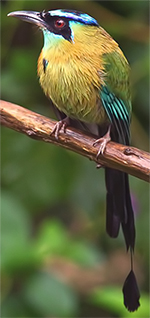 WHEN IT'S DREARY & COLD
WHEN IT'S DREARY & COLD
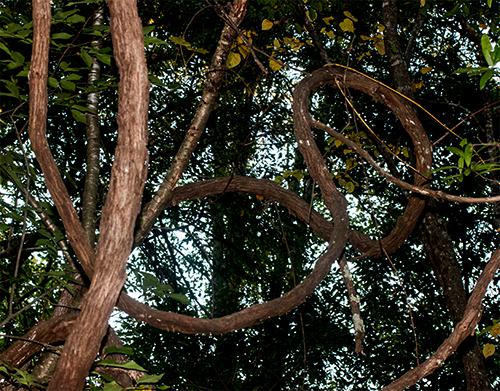
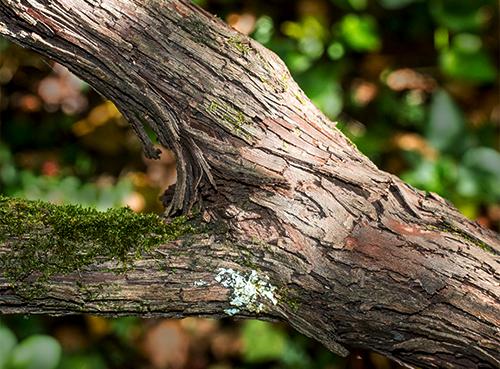
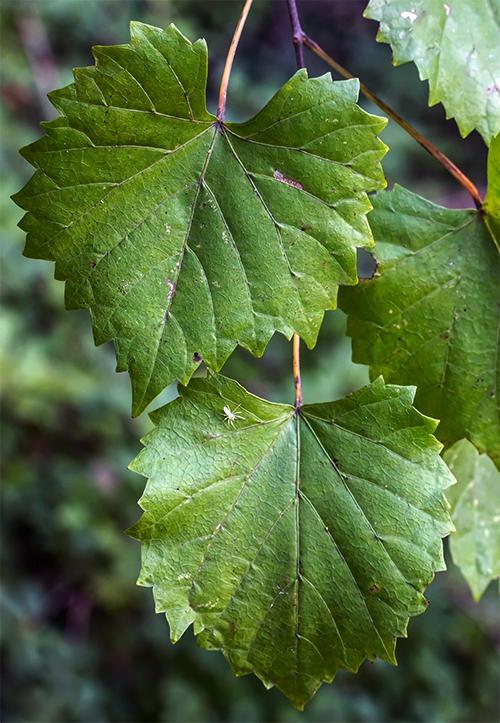
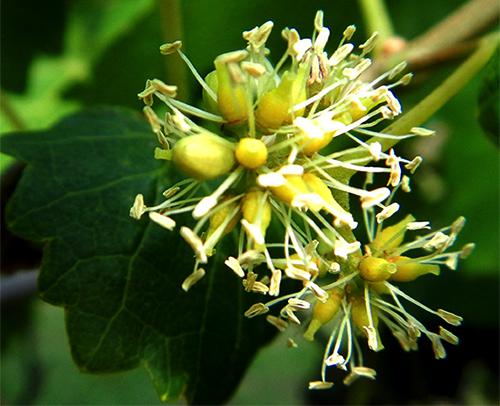
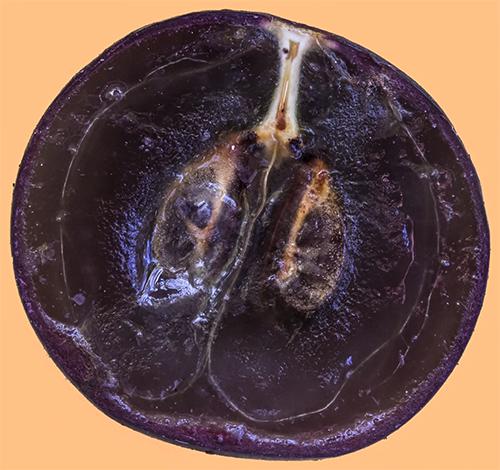
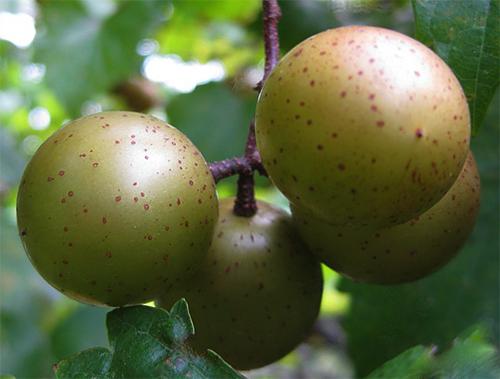
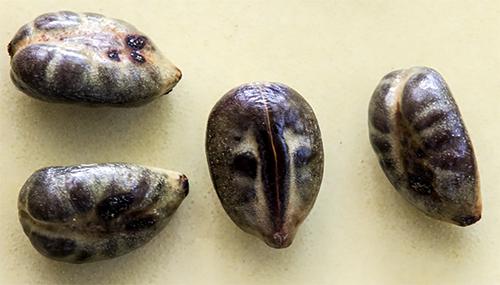
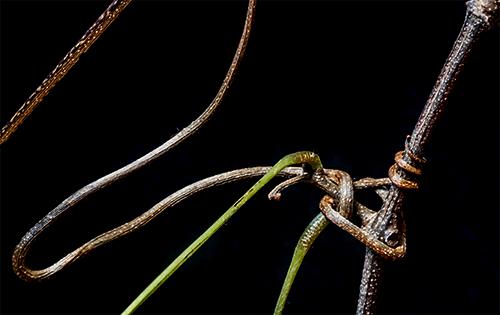
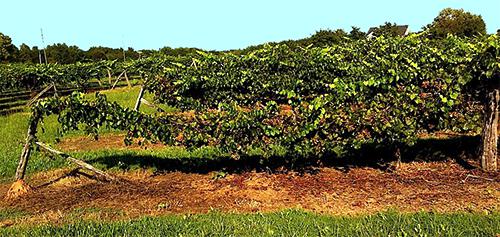









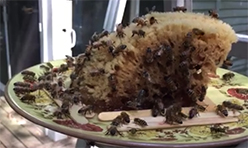
 Please report your spring, summer &
Please report your spring, summer & Oct 15 to Mar 15:
Oct 15 to Mar 15: